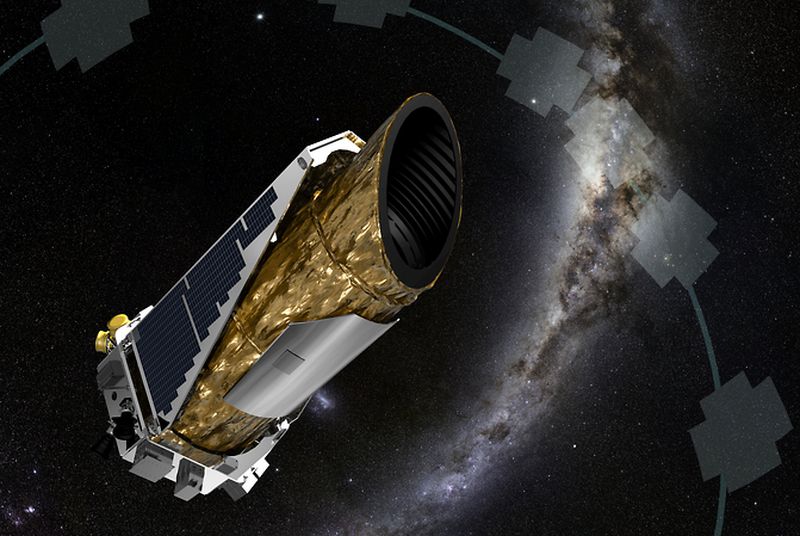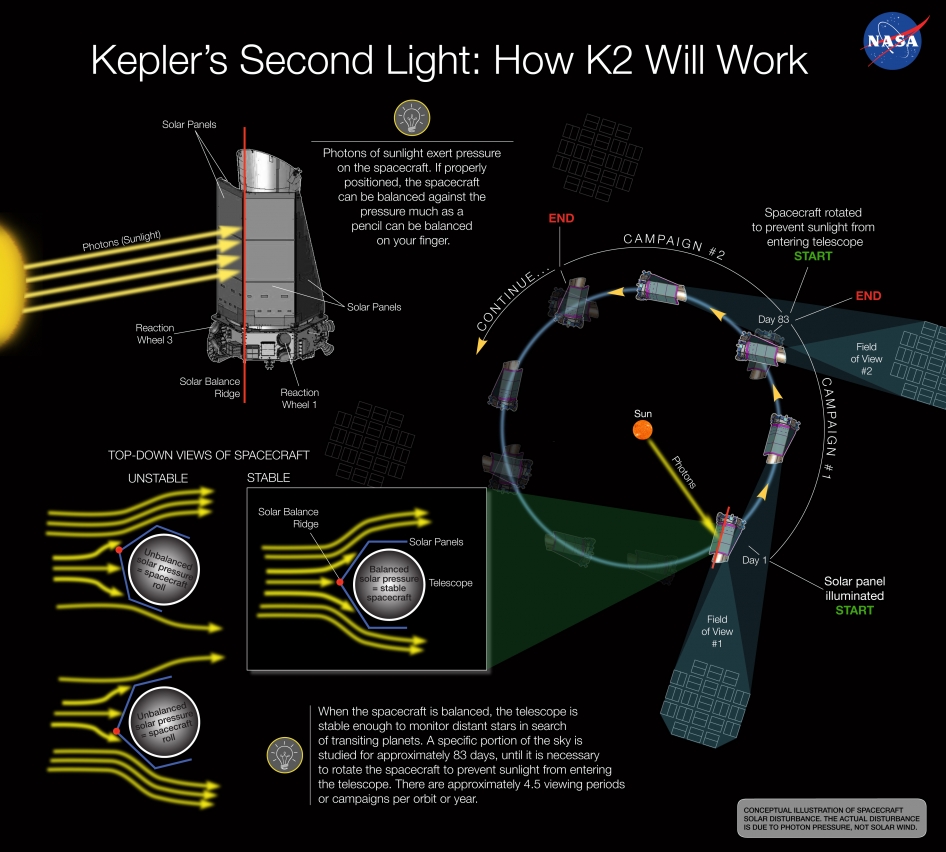Kepler Space Telescope works again and opens exoplanets

The Kepler telescope, which helped astronomers to detect a large number of exoplanets, was put into operation again, and managed to distinguish itself: to find an earth-like exoplanet. The inclusion happened just the other day: NASA announced the start of the K2 (“Second Light”) mission ( and in Russian ) yesterday.
The telescope itself worked even longer than the allotted time. Initially, it was planned that Kepler will work for three and a half years. Instead, he worked more than four, and now continues to work. True, it was not without problems, very significant, which led to the completion of the K1 mission.
')
These problems are the failure of two of the four gyros of the telescope, which allowed scientists to withstand a certain direction of the telescope's “view”. The telescope lens was always directed to the same point in the sky. 4 months before the mission was completed, one of the gyroscopes failed, and another 10 months later the second one. After this, the mission was decided to complete, since it became impossible to maintain direction.
However, scientists have now managed to find an original solution to the problem of telescope positioning in space, using the remaining two gyroscopes. It was decided to use the Sun as another reference point, and not so much the star itself, as its radiation, the "solar wind." According to scientists, the pressure exerted by photons will be enough to keep the telescope in the same position.

Well, so that the Sun does not put the telescope out of order, constantly “looking” into the lens, scientists will change the positioning of Kepler, changing its viewing angle every 83 days. In total it turns out 9 points, which will be directed "view" of the telescope.
It was planned earlier, and it was done that way. As a result, in the first days of the K2 mission, the telescope was able to open the exoplanet HIP 116454b, located 180 light years from us. This planet is 2.5 times smaller than the Earth (the diameter of the planet is 2.5 times smaller than the diameter of the Earth). In this case, the planet very quickly revolves around its star, completing the cycle in just 9 days (instead of 364, like the Earth). It seems that on this planet it is very hot, the temperature is much higher than the “threshold of life”.
It is worth noting that during his work (since 2009) Kepler discovered more than 4,000 exoplanets. Some of them are now considered land-like, it is assumed that on such planets water may exist in liquid form.
It remains to wish the telescope a long and successful work for the benefit of mankind. If all goes well, scientists will be able to make many more discoveries.
Source: https://habr.com/ru/post/364627/
All Articles